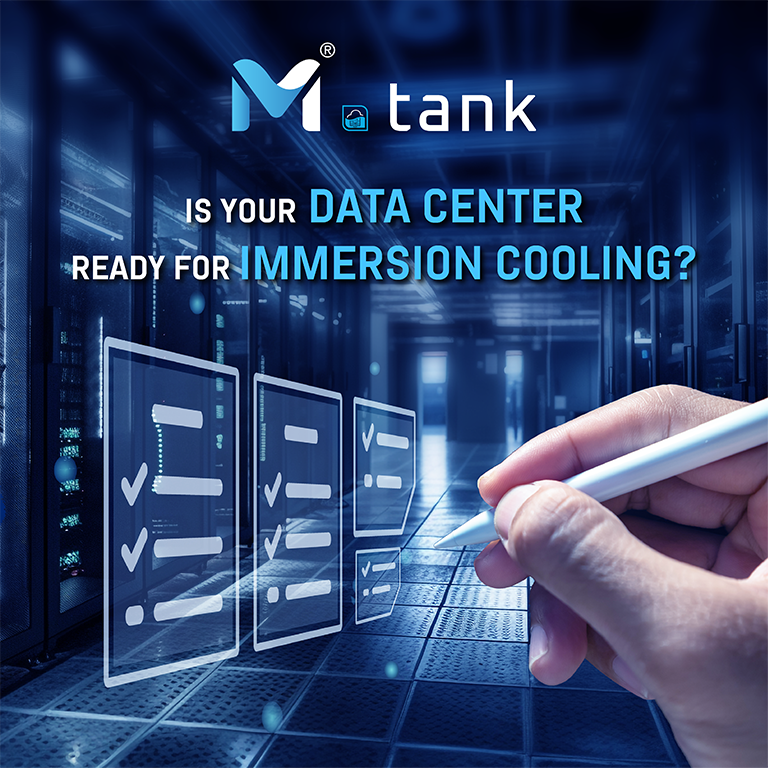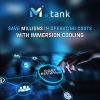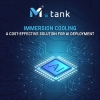


Immersion cooling is increasingly recognized as a highly effective solution for high-density computing environments. This method, which involves submerging IT hardware in non-conductive dielectric fluid, offers substantial benefits in terms of energy efficiency, operational cost reduction, and space optimization—particularly in environments with intensive workloads such as artificial intelligence (AI), high-performance computing (HPC), and modern enterprise data centers.
Practical implementations have demonstrated that immersion cooling can reduce energy consumption by up to 50%, support three times the compute density, and achieve Power Usage Effectiveness (PUE) ratings as low as 1.02 to 1.04, far surpassing the efficiency of conventional air-cooled systems.
Several global technology leaders have already adopted immersion cooling technologies:
- Microsoft has utilized immersion cooling to support services such as Microsoft Teams, resulting in significant energy savings.
- Alibaba reported a 36% reduction in energy consumption and achieved a PUE of 1.07 through the use of single-phase immersion cooling.
- BitFury operates a deployment of 160 two-phase immersion tanks, maintaining a PUE as low as 1.02.
To ensure the successful implementation of immersion cooling, data centers must first evaluate their existing infrastructure and operational capacity. The following checklist outlines key considerations:
1. Electrical Infrastructure
- High-Capacity Power Distribution: Immersion systems support greater compute density, which increases power demand per rack. Facilities must be equipped to handle this elevated load.
- Redundant and Stable Power Supply: A consistent and fault-tolerant power infrastructure, including backup systems such as UPS, is essential to mitigate the risks associated with outages.
- Upgrade Capability: Supporting immersion systems may require electrical upgrades such as enhanced circuit breakers, thicker cabling, or new power distribution panels.
2. Thermal Management and Fluid Handling
- Physical Space for Tanks: It is necessary to ensure sufficient space is available for immersion tanks, as well as adequate access for operational staff.
- Decommissioning Legacy Cooling Systems: Transitioning to immersion cooling often involves removing or repurposing traditional CRAC units, raised floors, and other legacy air-based systems.
3. IT Infrastructure and Operational Readiness
- Immersion-Compatible Hardware: Not all servers are designed for submersion. Organizations may need to invest in purpose-built hardware or adapt existing equipment to meet immersion standards.
- Network Infrastructure Capacity: Increased server density can lead to higher network throughput. The networking environment must be capable of supporting increased traffic without performance degradation.
If your facility aligns with most of the criteria above, it is advisable to proceed with a comprehensive Total Cost of Ownership (TCO) analysis and consider initiating a pilot deployment. For organizations that are still evaluating feasibility, CSD Group offers consultation services to help assess your current environment and develop a tailored implementation plan.
CSD TECHNOLOGY GROUP JSC
Your trusted partner in deploying on-premise cloud solutions integrated with green cooling
technologies.
Our team of experts is always ready to provide consultation and design tailored solutions aimed
at building powerful, energy-efficient, and environmentally friendly digital infrastructure for
each business.
Address: 462 Cao Thang St, Hoa Hung Ward, Ho Chi Minh City, Vietnam
Hotline: Mr Quan - 0907536513 (Zalo)
Email: sales@csdgroup.com.vn


